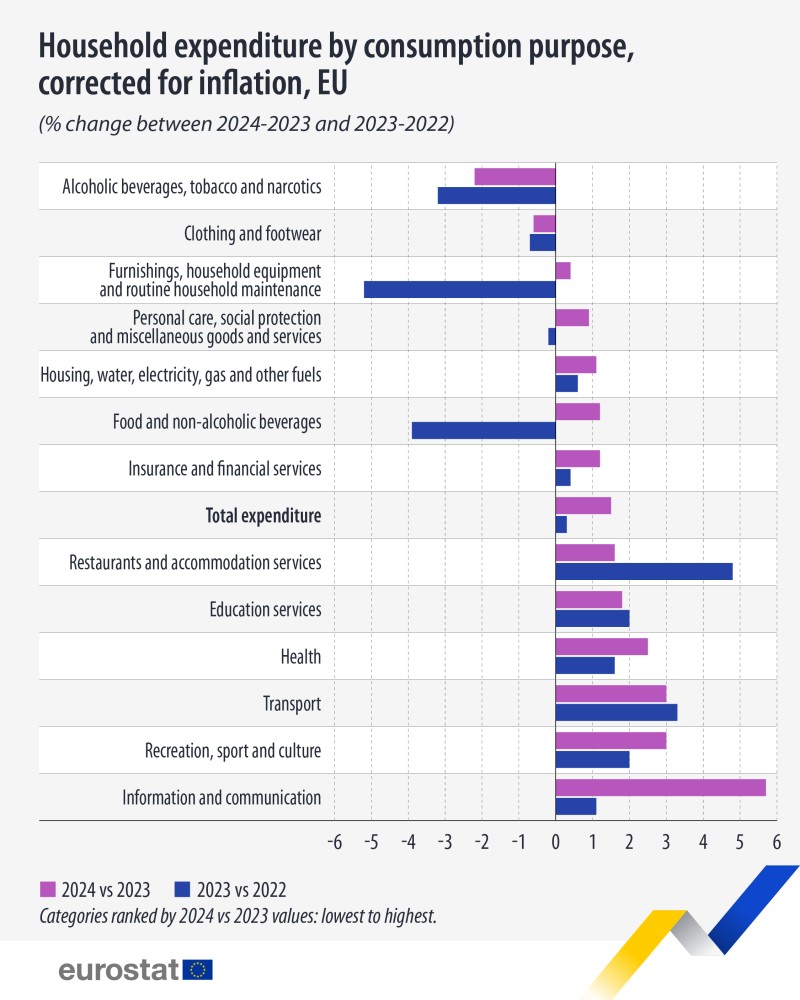⬤ Household spending across the European Union climbed 1.5 percent in 2024 compared to the previous year when adjusted for inflation. The Eurostat data reveals notable shifts across major spending categories, showing how consumer priorities evolved throughout the year.

⬤ Information and communication led the way with a 5.7 percent jump, marking the strongest annual growth among all categories. Transport, recreation and culture, education services, and restaurants and accommodation also posted solid gains year-over-year. Meanwhile, spending on food and non-alcoholic beverages, housing and utilities, and personal care products barely budged, suggesting households stayed cautious with essential purchases.
⬤ The biggest drop came from alcoholic beverages, tobacco and narcotics, which fell 2.2 percent. Clothing and footwear along with furnishings and household equipment also declined. Several categories flipped direction between 2023 and 2024, with services generally doing better than goods-related segments.
⬤ The findings point to changing consumption habits across the EU, with digital-related spending gaining ground while discretionary goods lose steam. These patterns offer a window into broader economic conditions, including how households feel about their finances, inflation's ongoing impact, and the relative strength of service demand across member states.
 Peter Smith
Peter Smith

 Peter Smith
Peter Smith


